How to Leverage Seasonal Promotions to Boost Mattress Sales
How to Leverage Seasonal Promotions to Boost Mattress Sales
In the competitive mattress industry, standing out and driving sales requires strategic marketing efforts. One of the most effective ways to achieve this is by leveraging seasonal promotions. Seasonal promotions not only attract customers during peak buying times but also help in clearing inventory, increasing brand awareness, and fostering customer loyalty.
This comprehensive guide explores various strategies to effectively leverage seasonal promotions to boost mattress sales. From understanding the significance of seasonal trends to implementing targeted marketing campaigns, we cover everything you need to know to maximize your promotional efforts and achieve sustained growth.
Table of Contents
- Introduction
- 1. Understanding Seasonal Promotions
- 1.1 Definition and Importance
- 1.2 Types of Seasonal Promotions
- 1.3 Seasonal Trends in the Mattress Industry
- 2. Planning Seasonal Promotions
- 3. Executing Marketing Campaigns
- 3.1 Multichannel Marketing Strategies
- 3.2 Leveraging Digital Marketing
- 3.3 Traditional Marketing Techniques
- 4. Enhancing Customer Engagement
- 5. Measuring Promotion Success
- Conclusion
- Frequently Asked Questions (FAQ)
- 25 Relevant Keywords
1. Understanding Seasonal Promotions
Seasonal promotions are marketing strategies that leverage specific times of the year to boost sales and engage customers. These periods often coincide with holidays, back-to-school seasons, or weather changes, providing natural opportunities to offer discounts and special deals.
1.1 Definition and Importance
Seasonal promotions involve creating targeted marketing campaigns during particular seasons or events to capitalize on increased consumer spending and heightened shopping activities.
- Revenue Boost: Seasonal promotions can significantly increase sales volumes during peak times.
- Inventory Management: They help in clearing out older inventory to make way for new products.
- Brand Awareness: Consistent seasonal promotions keep your brand visible and relevant throughout the year.
- Customer Acquisition: Attract new customers who may become repeat buyers after a positive promotional experience.
- Example: "Offering a Black Friday sale with substantial discounts on select mattress models can drive a surge in sales and attract bargain-seeking customers."
1.2 Types of Seasonal Promotions
Various types of seasonal promotions can be employed to attract customers and boost sales. Each type serves different purposes and can be tailored to meet specific business objectives.
- Discounts and Sales: Offering percentage-based discounts, buy-one-get-one-free deals, or limited-time sales to incentivize purchases.
- Bundle Offers: Combining mattresses with accessories like pillows, bedding, or sleep masks at a discounted price.
- Holiday-Themed Promotions: Creating promotions around holidays such as Christmas, Thanksgiving, or New Year to tap into seasonal buying behaviors.
- Clearance Sales: Reducing prices on older models to clear inventory and make space for new stock.
- Example: "A spring cleaning promotion offering discounts on mattresses to encourage customers to refresh their sleep setup after the winter months."
1.3 Seasonal Trends in the Mattress Industry
Understanding seasonal trends in the mattress industry is crucial for planning effective promotions. Different times of the year see varying consumer behaviors and demands.
- Back-to-School Season: Parents shopping for new bedrooms for their children, including mattresses.
- Holiday Season: Increased gift-giving and home improvement projects, leading to higher mattress sales.
- New Year: Consumers setting resolutions for better health and wellness, including improved sleep quality.
- Summer: Interest in cooling mattresses and addressing issues like overheating.
- Example: "During the holiday season, promoting mattresses as perfect gifts for family members can align with consumers' gift-giving motivations."
2. Planning Seasonal Promotions
Effective planning is the cornerstone of successful seasonal promotions. It involves setting clear objectives, allocating budgets, and scheduling promotions to align with key shopping periods.
2.1 Setting Objectives
Defining clear objectives ensures that your seasonal promotions are focused and measurable. Common objectives include increasing sales, attracting new customers, clearing inventory, and enhancing brand awareness.
- Increase Sales: Aim to boost overall sales revenue during the promotion period.
- Customer Acquisition: Attract new customers who may become repeat buyers.
- Inventory Clearance: Reduce stock of older mattress models to make room for new inventory.
- Example: "Set a goal to increase sales by 20% during the holiday season through targeted discounts and marketing campaigns."
2.2 Budgeting and Resourcing
Allocating an appropriate budget and resources is essential for executing effective seasonal promotions. This includes funds for advertising, discounts, staff training, and inventory management.
- Advertising Budget: Allocate funds for digital marketing, print ads, social media campaigns, and other promotional channels.
- Discount Allocation: Determine the extent of discounts or offers you can provide without compromising profitability.
- Staff Training: Ensure your sales team is prepared to handle increased customer inquiries and manage promotions effectively.
- Example: "Allocate 30% of your promotional budget to online advertising and 20% to in-store displays and discounts to maximize reach and impact."
2.3 Timing Your Promotions
Choosing the right timing for your promotions can significantly affect their success. Align your promotions with key dates and shopping periods to capitalize on increased consumer spending.
- Seasonal Peaks: Launch promotions during peak shopping seasons relevant to your objectives.
- Lead Time: Start promoting early to build anticipation and allow customers to plan their purchases.
- Example: "Begin advertising your holiday promotion two weeks before Thanksgiving to capture early shoppers and extend the promotion through the holiday season."
3. Executing Marketing Campaigns
Once your promotional plan is in place, executing effective marketing campaigns is crucial for reaching your target audience and driving engagement. Employing a mix of multichannel marketing strategies can maximize your promotional efforts.
3.1 Multichannel Marketing Strategies
Utilizing multiple marketing channels ensures that your promotion reaches a broader audience. Each channel offers unique advantages and can be tailored to specific segments of your target market.
- Digital Marketing: Use email campaigns, social media ads, and search engine marketing to reach online audiences.
- In-Store Promotions: Enhance the in-store experience with special displays, signage, and exclusive offers.
- Traditional Marketing: Incorporate print ads, radio spots, and direct mail to engage with customers who prefer traditional media.
- Example: "Run a Facebook ad campaign targeting local homeowners with a special holiday discount, while simultaneously promoting the same offer through in-store signage and email newsletters."
3.2 Leveraging Digital Marketing
Digital marketing offers powerful tools to promote seasonal promotions effectively. By leveraging online platforms, you can target specific audiences and track the performance of your campaigns in real-time.
- Social Media Advertising: Utilize platforms like Facebook, Instagram, and Pinterest to run targeted ads showcasing your seasonal offers.
- Email Marketing: Send personalized emails to your subscriber list highlighting your promotions, exclusive deals, and limited-time offers.
- Search Engine Marketing (SEM): Invest in Google Ads to appear in search results when customers look for mattresses during your promotional period.
- Example: "Create an Instagram campaign featuring attractive visuals of your mattresses with a caption promoting a spring sale, targeting users in your local area."
3.3 Traditional Marketing Techniques
While digital marketing is essential, traditional marketing techniques can complement your efforts by reaching audiences who prefer offline channels.
- Print Advertising: Place ads in local newspapers, magazines, and community newsletters to reach a broader demographic.
- Radio and TV Spots: Utilize local radio and television to broadcast your promotions, especially during high-listenership times.
- Direct Mail: Send postcards or flyers to targeted households with information about your seasonal promotions and exclusive offers.
- Example: "Distribute flyers in residential neighborhoods promoting a holiday sale with a special discount code, encouraging recipients to visit your store."
4. Enhancing Customer Engagement
Engaging with customers during seasonal promotions is vital for building relationships, fostering loyalty, and encouraging repeat business. Effective engagement strategies can transform one-time shoppers into long-term customers.
4.1 Personalized Offers
Personalizing offers based on customer preferences and behaviors can increase the relevance and effectiveness of your promotions. Tailored deals make customers feel valued and understood.
- Customer Segmentation: Divide your customer base into segments based on demographics, purchase history, and preferences.
- Targeted Discounts: Offer discounts on products that align with each segment's interests and needs.
- Example: "Send a personalized email to customers who previously purchased memory foam mattresses with a special discount on the latest memory foam models during a summer promotion."
4.2 Loyalty Programs
Loyalty programs reward repeat customers and incentivize them to continue purchasing from your store. Integrating seasonal promotions into your loyalty programs can enhance their appeal.
- Points Systems: Allow customers to earn points for purchases, which can be redeemed for discounts or free products during promotions.
- Exclusive Access: Offer loyalty members early access to seasonal sales or exclusive deals.
- Example: "Introduce a 'Spring Refresh' loyalty campaign where members earn double points on mattress purchases made during the spring season, encouraging increased spending."
4.3 Interactive Promotion Events
Hosting interactive events during seasonal promotions can engage customers directly, providing a memorable experience that encourages sales and brand loyalty.
- In-Store Events: Organize events such as mattress testing sessions, sleep workshops, or home decor consultations to attract customers to your store.
- Online Webinars: Conduct webinars on topics like 'Choosing the Right Mattress for Your Needs' to engage with a broader audience.
- Contests and Giveaways: Run contests or giveaways tied to your seasonal promotions to generate excitement and participation.
- Example: "Host a 'Summer Sleep Better' event featuring free mattress consultations, discounts for attendees, and a raffle for a free mattress to encourage store visits during the promotion."
5. Measuring Promotion Success
To ensure your seasonal promotions are effective, it's essential to measure their success against predefined objectives. Analyzing key performance indicators (KPIs) and utilizing analytics tools can provide valuable insights into the effectiveness of your campaigns.
5.1 Key Performance Indicators
Identifying and tracking relevant KPIs allows you to evaluate the success of your seasonal promotions accurately. Common KPIs for mattress sales promotions include:
- Sales Revenue: Measure the total revenue generated during the promotion period compared to previous periods.
- Conversion Rate: Calculate the percentage of visitors who made a purchase during the promotion.
- Customer Acquisition Cost (CAC): Determine the cost incurred to acquire a new customer through the promotion.
- Return on Investment (ROI): Assess the profitability of the promotion by comparing the revenue generated against the costs invested.
- Example: "Track the increase in sales revenue during the holiday promotion and compare it to the same period last year to evaluate growth."
5.2 Analytics Tools
Utilizing analytics tools can provide detailed insights into the performance of your promotions. These tools help in tracking various metrics and understanding customer behavior.
- Google Analytics: Monitor website traffic, user behavior, and conversion rates related to your promotions.
- Social Media Insights: Use platform-specific analytics to evaluate the reach and engagement of your social media campaigns.
- Sales Tracking Software: Implement sales tracking systems to monitor real-time sales data and identify trends during the promotion.
- Example: "Use Google Analytics to track the number of visitors coming to your website through your seasonal promotion ads and analyze their behavior to optimize future campaigns."
5.3 Adjusting Strategies Based on Data
Data-driven decision-making is crucial for refining your promotional strategies and maximizing their effectiveness. Analyzing performance data allows you to identify what works and what needs improvement.
- Identify Strengths and Weaknesses: Determine which aspects of your promotion were successful and which were not.
- Optimize Future Promotions: Use insights gained from data analysis to enhance future promotional strategies, such as adjusting discount levels or targeting different customer segments.
- Example: "If data shows that email campaigns had a higher conversion rate than social media ads during your last promotion, allocate more resources to email marketing in future campaigns."
Conclusion
Seasonal promotions offer a powerful opportunity to boost mattress sales, attract new customers, and enhance brand visibility. By understanding the dynamics of seasonal trends, meticulously planning your promotions, executing targeted marketing campaigns, engaging customers effectively, and measuring your success through data-driven insights, you can maximize the impact of your promotional efforts.
Embrace these strategies to stay ahead in the competitive mattress industry, foster customer loyalty, and achieve sustained growth. Remember, the key to successful seasonal promotions lies in preparation, execution, and continuous optimization based on performance metrics.
Frequently Asked Questions (FAQ)
1. What are seasonal promotions?
Seasonal promotions are marketing campaigns that leverage specific times of the year, such as holidays or seasonal changes, to boost sales and engage customers through targeted offers and discounts.
2. Why are seasonal promotions important for mattress stores?
Seasonal promotions are important because they capitalize on increased consumer spending during certain times of the year, help clear out old inventory, attract new customers, and build brand loyalty.
3. How can I plan effective seasonal promotions?
Effective planning involves setting clear objectives, allocating a budget, understanding seasonal trends, scheduling promotions at optimal times, and preparing your inventory and marketing materials in advance.
4. What types of seasonal promotions work best for mattress stores?
Popular types include discounts on specific products, bundle deals, holiday-themed sales, clearance events, loyalty rewards, and financing options tailored to the season.
5. How can I use digital marketing for seasonal promotions?
Leverage social media ads, email marketing, search engine marketing, and content marketing to reach your target audience online. Use targeted campaigns and track performance using analytics tools.
6. What role do social media platforms play in promoting seasonal sales?
Social media platforms are crucial for reaching a wide audience, engaging with customers through targeted ads, sharing promotional content, and interacting directly with your audience to build excitement and drive traffic to your store.
7. How can email marketing enhance my seasonal promotions?
Email marketing can deliver personalized offers, inform subscribers about upcoming sales, remind them of limited-time deals, and provide exclusive discounts to loyal customers, thereby increasing engagement and conversions.
8. What are some effective multichannel marketing strategies for seasonal promotions?
Combining online advertising (Google Ads, social media), in-store promotions, email campaigns, direct mail, and influencer partnerships ensures comprehensive coverage and maximizes reach.
9. How can I personalize offers for my customers during promotions?
Segment your customer base based on demographics, purchase history, and preferences. Tailor discounts, product recommendations, and exclusive deals to each segment to increase relevance and appeal.
10. What are loyalty programs and how do they benefit my mattress store?
Loyalty programs reward repeat customers with points, discounts, or exclusive offers for their continued patronage. They increase customer retention, encourage higher spending, and foster long-term relationships.
11. How can I measure the success of my seasonal promotions?
Track key metrics such as sales volume, website traffic, conversion rates, customer acquisition costs, and customer feedback to evaluate the effectiveness and ROI of your campaigns.
12. What are some common mistakes to avoid in seasonal promotions?
Common mistakes include poor planning, inadequate inventory management, unclear promotion messaging, lack of promotion across multiple channels, failing to track performance, and not following up with customers after the promotion.
13. How can I use customer feedback to improve future promotions?
Analyze reviews, survey responses, and direct feedback to understand what aspects of your promotions were successful and what could be improved. Use these insights to make informed adjustments for future campaigns.
14. What is the best time to start promoting seasonal sales?
Start promoting well in advance of the season or event. Begin teasing promotions several weeks before to build anticipation and allow customers time to plan their purchases.
15. How can I use in-store displays to enhance seasonal promotions?
Create visually appealing setups, use signage to communicate discounts, showcase featured products, and strategically place promotional materials to catch customers’ attention in-store.
16. What role do influencers play in seasonal promotions?
Influencers can amplify your seasonal promotions by reaching their engaged audiences, creating authentic content featuring your products, and providing credible endorsements that drive interest and sales.
17. How can I leverage local SEO for my seasonal promotions?
Optimize your website and online listings with location-specific keywords, create localized content related to your promotions, and ensure your business information is consistent across all platforms to enhance visibility in local search results.
18. What types of discounts are most effective during seasonal promotions?
Effective discounts include percentage-based discounts, buy-one-get-one-free offers, bundle deals, limited-time offers, and exclusive member discounts. The key is to offer value that resonates with your target audience.
19. How can I use analytics tools to track promotion performance?
Use analytics tools like Google Analytics, social media insights, and your e-commerce platform’s built-in analytics to track metrics such as traffic sources, conversion rates, sales data, and customer behavior during promotions.
20. What is the importance of mobile optimization in seasonal promotions?
Mobile optimization is crucial as a significant portion of customers shop and engage with promotions on their mobile devices. Ensuring your website is mobile-friendly enhances user experience, increases engagement, and improves conversion rates during promotions.
21. How can I create urgency in my seasonal promotions?
Create urgency by using limited-time offers, countdown timers, limited stock notifications, and phrases like "Act Now" or "While Supplies Last" to encourage customers to make quick purchasing decisions.
22. Can I use bundled offers during seasonal promotions?
Yes, bundled offers are highly effective during seasonal promotions. By grouping related products together at a discounted price, you provide added value to customers and encourage them to purchase more items.
23. How can I use content marketing to support my seasonal promotions?
Create blog posts, videos, and guides that highlight your seasonal promotions, provide valuable information related to your products, and drive traffic to your promotional pages. This enhances SEO and engages your audience.
24. What are some creative promotional ideas for mattress stores?
Creative ideas include hosting mattress testing events, offering extended warranties during promotions, creating referral programs, providing financing options, and organizing community events or contests related to home improvement.
25. How can I ensure my promotions are compliant with advertising regulations?
Ensure compliance by familiarizing yourself with local advertising laws, clearly disclosing terms and conditions, avoiding misleading claims, and maintaining honesty in your promotional messaging. Regularly review regulations to stay updated and compliant.
25 Relevant Keywords
- Seasonal Promotions Mattress Sales
- Boost Mattress Sales
- Mattress Store Marketing
- Holiday Mattress Deals
- Seasonal Marketing Strategies
- Mattress Promotions Planning
- Marketing Seasonal Sales
- Mattress Store Revenue Growth
- Holiday Sales Mattress
- Seasonal Discounts Mattress
- Mattress Store Promotions
- Marketing Strategies for Mattress Stores
- Seasonal Sales Techniques
- Mattress Store Advertising
- Seasonal Marketing Tips Mattress
- Boosting Mattress Sales
- Mattress Store Revenue Strategies
- Seasonal Marketing Plans Mattress
- Mattress Store Customer Engagement
- Seasonal Promotions Ideas Mattress
- Seasonal Sales Campaigns Mattress
- Mattress Store Marketing Strategies
- Seasonal Marketing Mattress
- Mattress Sales Growth
- Seasonal Discounts Strategies
- Mattress Store Holiday Promotions
How to Leverage Seasonal Promotions to Boost Mattress Sales Read More »





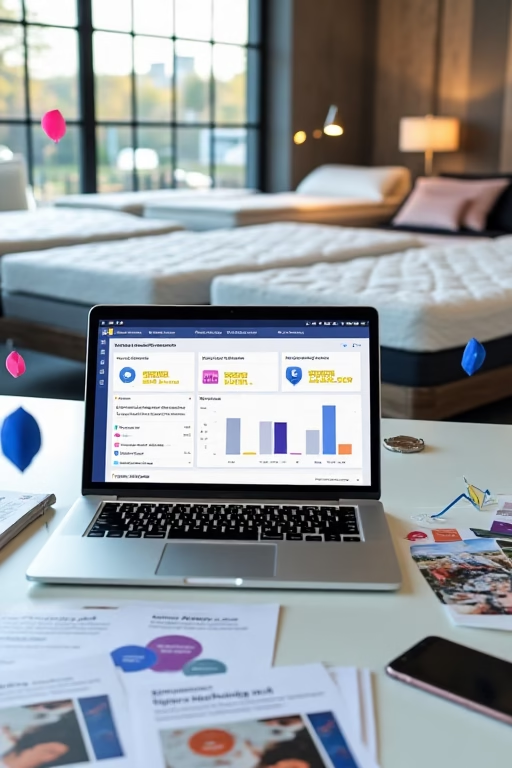
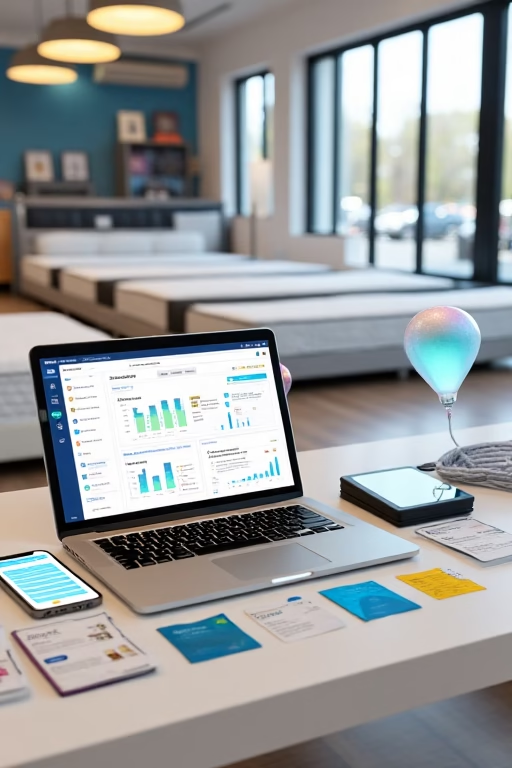
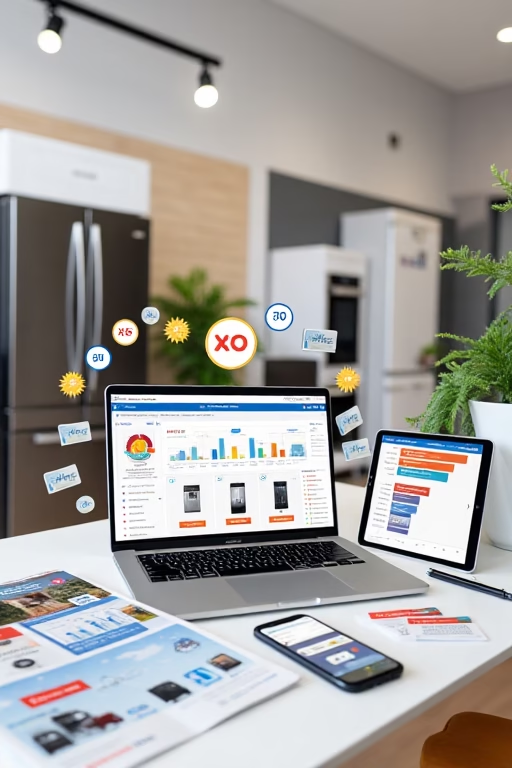
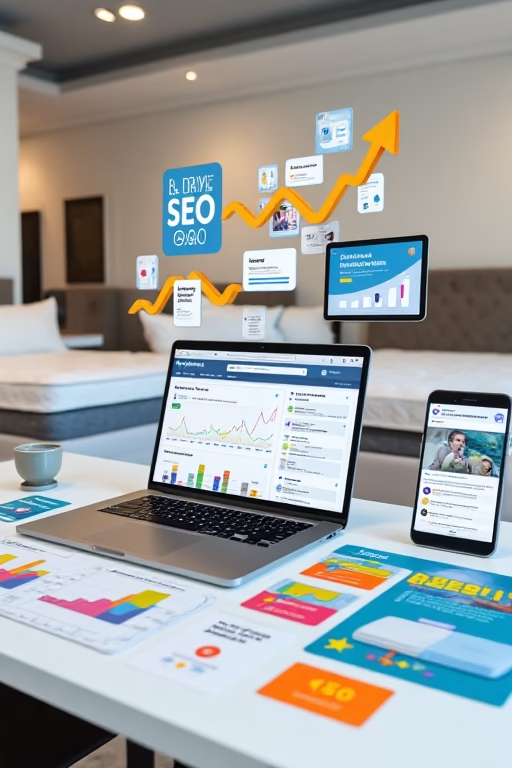


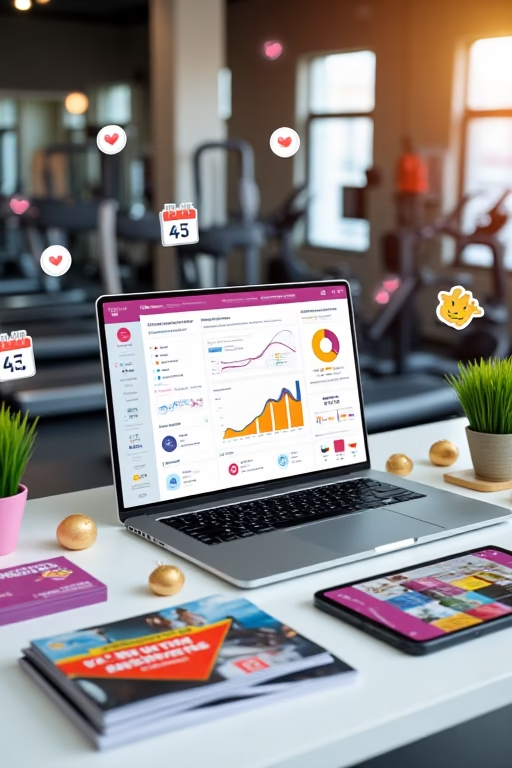

4.1 Social Media Sharing
Sharing customer reviews on social media platforms can extend their reach and influence, attracting new customers through authentic endorsements.